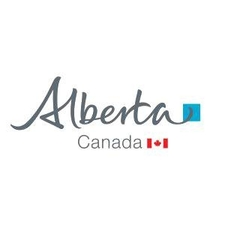UTILITIESCOMMUNICATION
Type of resources
Topics
Keywords
Contact for the resource
Provided by
Formats
Representation types
Update frequencies
status
-

The location of man made areas of importance pertinent to the business activities of the Government of Alberta.
-

The location of man made areas of importance pertinent to the business activities of the Government of Alberta.
-

The Base Features Access Powerline spatial layer is the authoritative source of powerline data for the province of Alberta. It is a part of the Access data collection which also includes railways, roads, cutlines and trails, and industrial facilities.
-

Rural Utilities Gas Franchise areas are created and maintained by Rural Utilities under the authority of the Gas Distribution Act. It contains the following layers: Apex Franchise Areas, ATCO Franchise Areas, Coop Franchise Areas, County Franchise Areas, Independent Franchise Areas, Community Gas Distributors and Customer Meters. “Changes to boundaries are based on a) additions or deletions of lands under the Gas Distribution Act and b) annexations or dissolutions under the Municipal Government Act.” Franchises cannot be issued for federal lands. However, the gas distributors serving these lands are under the authority of the Gas Distribution Act. Please Note: Rural Utilities assumes no responsibility as to the accuracy or completeness of these plans, Individual distributors must be contacted for actual locations of their pipelines. For pipelines located in Indigenous Lands, please contact the applicable Band Administration Office or the gas distributor for that area. Rural Utilities will not be liable for any direct, indirect, special, punitive, or consequential damages arising from the use of, or the inability to use this website. Links to other websites are provided for convenience only. Rural Utilities does not control, endorse, or guarantee the accuracy, completeness, efficacy and timeliness of other websites and is not responsible for the privacy practices of other websites.
-

The Alberta Human Footprint Monitoring Program (AHFMP) is collaboration between the following organizations: Alberta Environment and Parks (AEP) The Alberta Biodiversity Monitoring Institute (ABMI) Alberta Agriculture and Forestry (AAF) Alberta Energy Regulator (AER) Alberta Energy (AE) Various non-government organizations. The goal of the AHFMP is to improve the accuracy of the human footprint data and to focus expertise from the various organizations on a single footprint product. Currently AEP and ABMI co-lead the program. The AHFMP stratifies footprint features into footprint sublayers based on logical groupings. Roads, oil and gas well pads, rail lines, gravel pits, agriculture fields are examples of sub layers. Where possible, the AHFMP will obtain features for these sub layers directly from authoritative sources. In some of these cases the data authority are responsible for the distribution of the sub-layer. Only when the features are not available from an authoritative source will the AHFMP create their own data. When this occurs, the AHFMP will work with subject matter experts (SMEs) from various organizations to ensure the features are digitized and attributed correctly. AEP has completed the following sub-layers in collaboration with ABMI and Alberta Energy. These are available for public use: Oil and Gas Well Pads (conventional and in situ) for 2014 and 2016 Road verges, surfaces and centre lines for 2014 only. Pipeline verges and centre lines for 2016. Other sub-layers will be added as they are completed. ABMI is also working on numerous sub layers that are available on their website.
-

This dataset is provided by the Ministry of Utilities and Affordability, Rural Utilities Branch, and represents rural low-pressure pipelines (less than 700 kPa) in Alberta that are under the jurisdiction of the Gas Distribution Act, including Gas Co-ops, First Nations, Municipalities and Counties, Private Systems, Apex Utilities Inc., and ATCO Gas Inc. The data is based on annual submissions of as-builts to Rural Utilities, Alberta Affordability and Utilities. The pipeline attributes include current status, type of pipe, and the contact information for each distributor. The linear data features contain: 1. Pipe material, 2. Status, 3. Year built, if known, and 4. The name of the natural gas distributor and general contact information for inquiries and requests.
 Arctic SDI catalogue
Arctic SDI catalogue